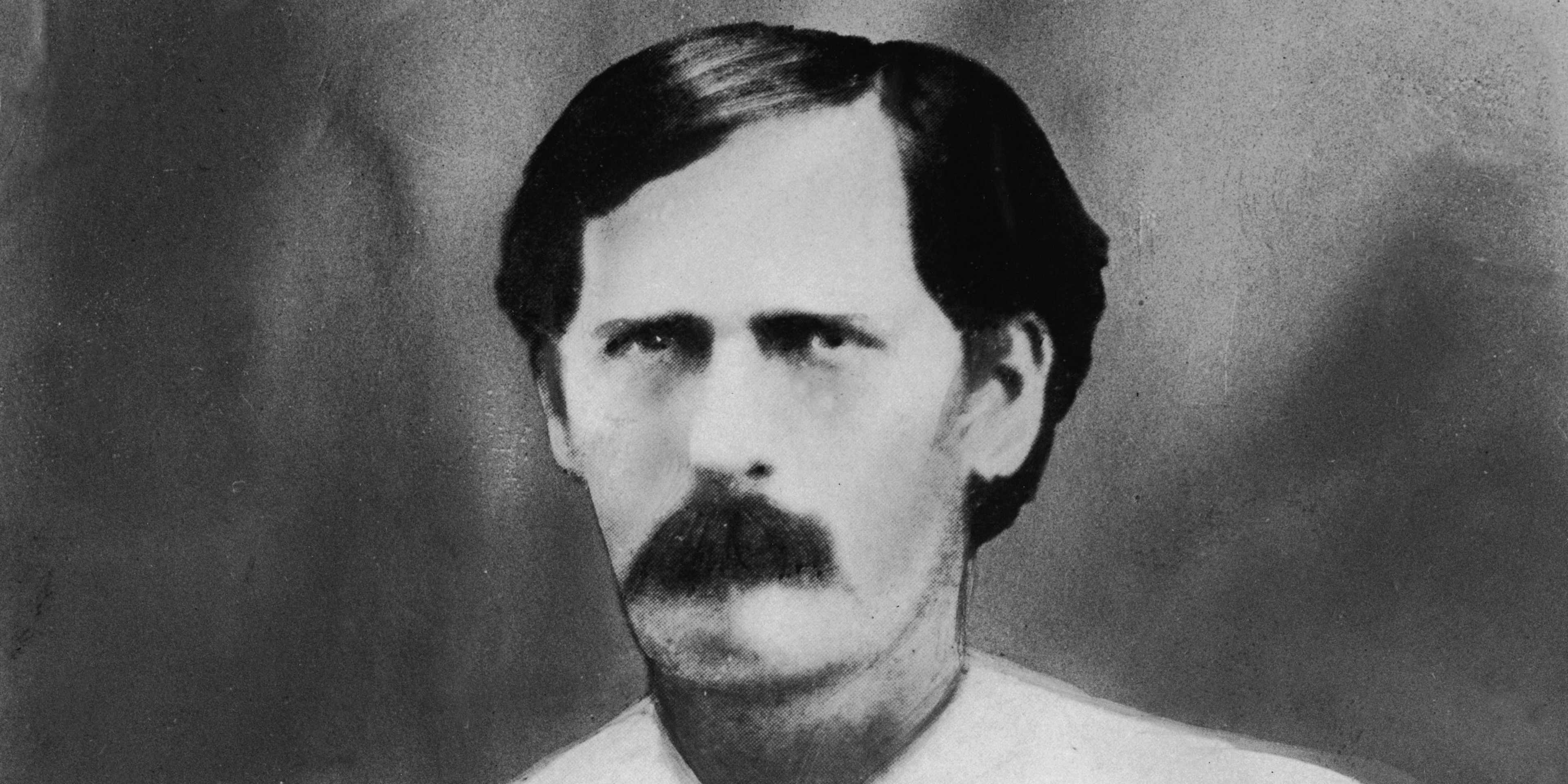Early Life
Wyatt Berry Stapp Earp was born in 1848 in Monmouth, Illinois. The third of five sons born to Nicholas and Virginia Ann Earp, he spent his early life in Illinois and Iowa.
As a young teenager, Wyatt repeatedly tried to run away and join his brothers James and Virgil and his half-brother Newton, who fought for the Union during the Civil War; each time he was caught and forced to return home.
At 17, Wyatt left home and found work hauling freight and grading track for the Union Pacific Railroad. In 1869, he joined his family in Lamar, Missouri, becoming the local constable after his father resigned the position.
Did you know? The mythic stature of Wyatt Earp as a virtuous lawman and the best gunfighter in the West grew in the decades after his death. He became the subject of numerous TV shows and movies, and has been portrayed by such leading actors as Henry Fonda, Burt Lancaster, James Garner, Kurt Russell and Kevin Costner.
In early 1870, Earp married Urilla Sutherland, but she died of typhoid within the year. Devastated, he sold his newly bought house and left town to move around the Indian Territory and Kansas.
Tombstone, Arizona
During this period, Earp frequented the saloons, gambling houses and brothels that proliferated on the frontier, and had several run-ins with law enforcement. But after helping a police officer in Wichita track down a wagon thief, Earp joined that city’s police force in 1875 and later became deputy town marshal of Dodge City. It was in Dodge City that Earp would make the acquaintance of Doc Holliday, a well-known gunman and gambler.
In 1879, Earp left Dodge City for Tombstone, Arizona, with his longtime companion, the former prostitute Mattie Blaylock,. The town was booming after a silver rush, and most of the Earp family had gathered there: Virgil was working as the town marshal, and Wyatt began working alongside him.
OK Corral
In March 1881, while pursuing a group of cowboys who had robbed a stagecoach, Wyatt struck a deal with local rancher Ike Clanton, who had ties to the cowboys. Clanton soon turned against him, however, and began threatening the Earp brothers. The feud escalated, and on October 26, 1881, it finally exploded into violence in a gunfight at the OK Corral in Tombstone.
In the gunfight, Virgil, Morgan and Wyatt Earp joined Doc Holliday to face off against the Clanton gang (Ike, his brother Billy, and Tom and Frank McLaury). Morgan, Virgil and Holliday were all wounded, but survived; Billy and the McLaurys were killed; and Wyatt Earp escaped without injury.
Ike Clanton filed murder charges against the Earp brothers and Holliday, but a judge cleared them in late November. In December, Virgil was shot and seriously wounded by unknown attackers; the following March, Morgan was killed when unknown gunmen attacked him and Wyatt at a Tombstone saloon. On a hunt for the culprits, Wyatt and his gang killed several suspects, then decided to leave town to avoid prosecution.
Later Life and Legend
After leaving Tombstone, Wyatt Earp moved around the West, eventually settling in California with Josephine Marcus, with whom he would spend the next 40 years. Over the years, he made an itinerant living by gambling, saloon-keeping, mining and real estate speculation.
He also worked with a personal secretary, John H. Flood, to write his memoirs, which received a poor reception during his lifetime. Earp died in Los Angeles in January 1929 at the age of 80.
The first major Earp biography, “Wyatt Earp, Frontier Marshal” by Stuart N. Lake, was published in 1931 and became a bestseller, establishing Earp as a folk hero among millions of Americans searching for inspiration and excitement during the hard times of the Great Depression.
Though Lake met with Earp himself near the end of his life, he later admitted that many of the quotations attributed to the frontiersman were invented, and the biography today is accepted as largely fictional.
Sources
Who Was Wyatt Earp? American Heritage. The Life of Wyatt Earp. PBS: American Experience. Wyatt Earp. West Adams Heritage Association.





